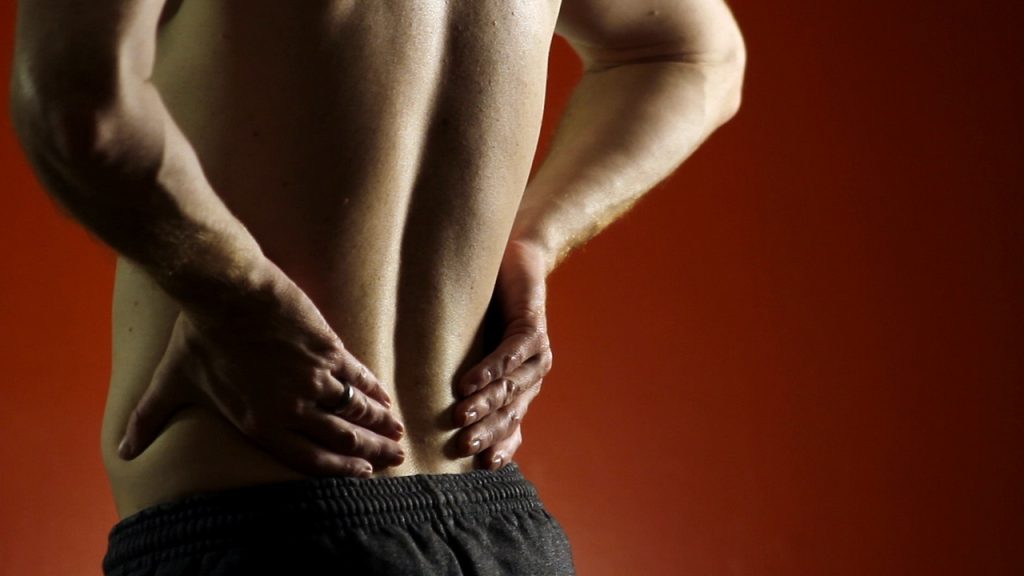Middle spine pain, also known as mid-back pain, can be a persistent and discomforting issue that affects countless individuals. Whether it’s caused by poor posture, muscular strain, or spinal misalignments, mid-back pain can significantly impact one’s quality of life. In this article, we’ll delve into the causes, symptoms, treatment options, and preventive measures related to middle spine pain, providing you with a comprehensive understanding of how to manage and alleviate this discomfort.
Contents
- 1 Understanding the Significance of Middle Spine Pain
- 2 How Does Middle Spine Pain Impact Daily Life?
- 3 Causes of Middle Spine Pain
- 4 Symptoms of Middle Spine Pain
- 5 Diagnosis and Medical Evaluation
- 6 Treatment Options
- 7 Preventing Middle Spine Pain
- 8 The Psychological Impact of Middle Spine Pain
- 9 Incorporating Movement into Daily Life
- 10 Conclusion
Understanding the Significance of Middle Spine Pain
Middle spine pain, also known as thoracic spine pain, refers to discomfort or pain experienced in the middle region of the back, which corresponds to the thoracic vertebrae. The thoracic spine is located between the cervical spine (neck) and the lumbar spine (lower back), and it consists of twelve vertebrae labeled T1 to T12.
Understanding the significance of middle spine pain involves considering its potential causes, implications, and the need for proper evaluation and treatment.
How Does Middle Spine Pain Impact Daily Life?

Middle spine pain can have a significant impact on daily life due to the central role that the thoracic spine plays in supporting the upper body and facilitating movement. The effects of middle spine pain can vary depending on the cause, severity, and duration of the pain, but here are some common ways in which it can affect daily life:
- Limitation of Movement: Middle spine pain can make it difficult to move the upper body freely. Activities that involve twisting, bending, lifting, or reaching can become painful and challenging to perform.
- Posture Problems: Pain in the middle spine can lead to poor posture as individuals may unconsciously adopt positions that provide temporary relief from pain. Over time, this can contribute to muscle imbalances and further exacerbate the pain.
- Reduced Mobility: Pain can lead to decreased mobility in the upper back and shoulder area, affecting simple tasks such as turning the head, looking over the shoulder, or reaching overhead.
- Difficulty with Everyday Tasks: Simple activities like getting dressed, reaching for items on high shelves, or even carrying a bag can become painful or uncomfortable.
- Impaired Breathing: Severe middle spine pain may affect breathing patterns and lung expansion. Pain-related shallow breathing can impact overall lung function and oxygen exchange.
Causes of Middle Spine Pain
Some of the causes of middle spine pain are:
- Muscle Strain: Overexertion, poor posture, or sudden movements can lead to muscle strains in the thoracic region.
- Spinal Misalignment: Poor posture, injuries, or conditions like scoliosis can cause misalignment of the thoracic vertebrae, leading to pain.
- Herniated Disc: The gel-like material within the spinal discs can protrude and press on nearby nerves, causing pain.
- Osteoarthritis: Wear and tear of the spinal joints can lead to arthritis and pain.
- Compression Fractures: Fractures in the vertebrae due to osteoporosis or trauma can cause severe pain.
- Spinal Stenosis: Narrowing of the spinal canal can compress nerves and cause pain.
- Visceral Causes: Problems with the organs in the chest or abdomen, like heart or stomach issues, can sometimes refer pain to in the middle back.
- Trauma: Injuries from accidents or falls can result in middle spine pain.
Symptoms of Middle Spine Pain
Middle spine pain, also known as thoracic spine pain, can manifest with a variety of symptoms depending on the underlying cause. Here are some common symptoms associated with middle spine pain:
- Pain: The most obvious symptom is pain in the middle of the back, specifically in the thoracic spine region. The pain can vary in intensity, from mild discomfort to sharp, stabbing pain. It might be continuous or intermittent.
- Stiffness: Many people with middle spine pain experience stiffness in the upper back. This stiffness can make it difficult to move the upper body comfortably.
- Tenderness: The area around the painful region might be tender to touch. Pressing on the affected area can elicit discomfort or pain.
- Limited Range of Motion: Middle spine pain can lead to a reduced ability to move the upper back and shoulders. This limitation can impact activities that involve twisting, bending, or lifting.
- Radiating Pain: The pain might radiate outward from the middle of the spine. It can extend to the sides of the torso, the ribs, or even down the arms.
Diagnosis and Medical Evaluation

Diagnosing the cause of middle spine pain involves a comprehensive medical evaluation to determine the underlying factors contributing to the discomfort. Here’s an overview of the steps typically taken during the diagnosis process:
- Medical History: Your healthcare provider will begin by asking about your medical history, including details about the onset, duration, and nature of your middle spine pain. They will inquire about any recent injuries, previous medical conditions, surgeries, and family history of spinal issues.
- Physical Examination: A thorough physical examination will be conducted to assess your posture, range of motion, and any areas of tenderness or swelling. The doctor may also check for any neurological symptoms such as numbness, tingling, or weakness in the arms or legs.
- Imaging Studies: Depending on the initial assessment, your doctor might order imaging tests to visualize the spinal structures and identify any abnormalities. Common imaging modalities include X-rays, magnetic resonance imaging (MRI), and computed tomography (CT) scans. These tests can provide detailed images of bones, discs, nerves, and soft tissues.
Treatment Options
The treatment for middle spine pain depends on the underlying cause, the severity of the pain, and individual factors. Here are some common treatment options that healthcare providers might recommend:
Conservative Management
- Rest and Activity Modification: Giving the affected area time to heal and avoiding activities that exacerbate the pain can be helpful.
- Physical Therapy: A physical therapist can design exercises and stretches to improve posture, strengthen muscles, and increase flexibility in the thoracic spine.
- Posture Correction: Learning proper posture techniques can prevent further strain on the spine and muscles.
- Ergonomic Adjustments: Making adjustments to your workspace, chair, and computer setup can promote better posture and reduce strain.
- Heat or Ice Therapy: Applying heat or ice to the affected area can help reduce pain and inflammation.
Medications
- Pain Relievers: Over-the-counter nonsteroidal anti-inflammatory drugs (NSAIDs) like ibuprofen or naproxen can help reduce pain and inflammation.
- Muscle Relaxants: These medications can alleviate muscle spasms that might be contributing to the pain.
- Topical Analgesics: Creams, gels, or patches containing pain-relieving substances can provide localized relief.
Preventing Middle Spine Pain
Preventing middle spine pain involves adopting healthy habits, maintaining good posture, and making lifestyle adjustments to reduce the risk of developing discomfort or injuries in the thoracic spine. Here are some preventive measures you can take:
Maintain Good Posture:
- Be mindful of your posture while sitting, standing, and walking. Keep your shoulders back, chest open, and head aligned with your spine.
- Use ergonomic chairs and workstations that support proper posture.
Exercise Regularly:
- Engage in exercises that strengthen the muscles supporting the spine, including the core, back, and shoulder muscles.
- Incorporate stretching routines to maintain flexibility and prevent muscle imbalances.
Lift Properly:
- When lifting objects, use your legs to lift, not your back.
- Hold the object close to your body and avoid twisting while lifting.
Avoid Prolonged Sitting:
- Take breaks to stand, stretch, and move around if you have a sedentary job or lifestyle.
Use Proper Technique:
- When performing activities that involve repetitive motions or heavy lifting, use proper body mechanics to reduce strain on your spine.
The Psychological Impact of Middle Spine Pain
The interplay between physical discomfort and emotional well-being is complex, and the psychological effects of middle spine pain can vary from person to person. Here are some ways in which middle spine pain can impact psychological well-being:
- Emotional Distress: Persistent pain can lead to feelings of frustration, helplessness, and anger. Individuals may feel overwhelmed by the constant discomfort and the challenges it presents in their daily lives.
- Anxiety: The uncertainty of when or if the pain will improve, as well as concerns about the impact on daily activities, work, and relationships, can lead to anxiety and worry.
- Depression: Chronic pain is often associated with an increased risk of developing depression. The pain itself, as well as the limitations it imposes, can contribute to feelings of sadness, isolation, and hopelessness.
- Sleep Disturbances: Middle-spine pain can disrupt sleep patterns, leading to sleep deprivation and further exacerbating emotional distress.
- Reduced Quality of Life: Pain-related limitations in activities, hobbies, and social interactions can result in a diminished overall quality of life. This can contribute to a sense of dissatisfaction and unhappiness.
Incorporating Movement into Daily Life

Incorporating movement into your daily life is essential for maintaining overall health and well-being, including the health of your spine. Here are some tips to help you integrate movement into your routine, even if you’re dealing with middle spine pain:
- Consult a Healthcare Professional: Before starting any new exercise routine, especially if you have middle spine pain, it’s important to consult your healthcare provider. They can guide what types of movements are safe and appropriate for your condition.
- Start Slowly: If you’re new to exercise or have been sedentary due to pain, start with gentle activities and gradually increase intensity and duration.
- Choose Low-Impact Activities: Activities like walking, swimming, and stationary cycling are generally gentle on the spine and joints. These activities provide cardiovascular benefits without putting excessive strain on the back.
- Practice Stretching: Incorporate gentle stretching into your routine to improve flexibility and relieve muscle tension. Focus on areas that might be contributing to your middle spine pain, such as the chest, shoulders, and upper back.
- Strengthen Core Muscles: Strong core muscles support your spine and improve posture. Engage in exercises that target the abdominal and back muscles, but avoid exercises that exacerbate your pain.
Conclusion
Taking control of your mid-back health is essential for enjoying a pain-free life. By understanding the causes, symptoms, and effective treatment options for middle spine pain, you can make informed decisions to manage and prevent discomfort.
If you’re experiencing Back pain, physical therapy for back pain at PhysioMantra can help: Book an online physical therapy session.



